Within the realm of supply chain management, centralized procurement is one of many factors that enable businesses to run more strategically. We have seen how a centralized purchasing strategy can streamline an end-user’s tech procurement and empower resellers to bid for international deals (with the right IOR partner). Let’s take a closer look at the risks involved in maverick spending.

Procurement, as with any business process, comes with risk. In our experience, we have seen clients use two procurement models, either a centralized or an in-market (decentralized) approach. Across the board, we have seen the benefits of a centralized strategy mitigates many risks many organizations will face when using a decentralized procurement model.
Let’s look at how a centralized purchasing strategy can alleviate many of the procurement risks for your business.
Risk #1: Maverick spending
Maverick or rogue spending occurs when a business loses potential savings. It, therefore, refers to buying goods or services outside a company’s procurement policy or a preferred channel—in essence, these are unjustified expenses for the business.
Maverick spending is often seen in the IT sector, where employees purchase hardware or SaaS without approval from the procurement department. Most organizations have strict restrictions in place for technology to safeguard the business and avoid:
- Wasted expenses: Often, the goods are not needed or incompatible with the current hardware.
- Security: Unapproved, unvetted vendors are a significant risk. They can lead to corruption and threaten the organization’s tech security.
- Compliance: Going against policies and procedures and ensuring compatibility across gear.
By going through a trusted vendor(s) or supplier(s) for all your tech needs, you can immediately mitigate the above risks, especially if a procurement portal is in place to improve transparency.
What this looks like:
An employee purchases software licenses without getting approval from the budget manager.
Risk #2: FX Risk
Foreign exchange (FX) risk is the risk that the value of a currency will fluctuate against another currency, causing financial losses. When buying products in your supplier’s currency, appreciation can impact your bottom line, making you pay more than the contracted price.
Some options to mitigate this risk include hedging strategies using currency forwards. However, these options are highly complex and often very costly in the long term.
Risk #3: Supplier Risk
This all boils down to quality assessment and rigorous onboarding. The business can assess all potential vendors against predetermined qualifications (e.g., quality control systems or adherence to regulatory requirements). While both models will use this system, a centralized strategy ensures you do it fewer times. Organizations will be able to manage contracts and monitor the performance of their suppliers, ensuring vendor due diligence. It also means more accountability—should something go wrong, it is easy to identify the bottleneck and department involved.
Overall, vendor risk management can help a business protect its supply chain and ensure the quality of the tech purchased.
What this looks like:
An employee purchases unapproved hardware from a vendor, only to realize it doesn’t match the vendor’s description.
Risk #4: Compliance and Quality Risk
This particular risk intertwines with the risks already mentioned. It ensures policies and due diligence are followed across the organization. Implementing quality control measures and reviewing purchase orders are key to ensuring compliance. This helps avoid costly penalties and protects a business’s reputation.
What this looks like:
A manager, with a tight deadline, decides to procure from a supplier that is not on the system (who has not been vetted) and purchases a brand that goes against company policies.
Risk #5: Corruption
This can be avoided through a centralized strategy by ensuring:
- Transparency: Centralized procurement processes are typically more transparent than decentralized processes. This is because centralized teams are responsible for developing and implementing procurement policies and procedures, selecting and managing suppliers, and reviewing and approving purchase orders. This means any irregularities or signs of corruption are easier to pick out and address.
- Accountability: As procurement teams are held accountable for the organization’s budget and ensuring compliance, staff understand that they will be held responsible for any wrongdoings.
- Controls: Having controls in place, such as competitive bidding or conflict of interest policies, can make corruption and fraud more difficult. It also limits the flow of funds to other entities through a centralized invoicing and payment system.
- Monitoring: Centralized procurement teams typically monitor supplier performance and spending patterns to identify potential red flags. This monitoring can help to detect and investigate any corruption or fraud that may be occurring.
What this looks like:
An employee procures hardware from a family friend who is not a listed vendor
Risk #6: Supply Chain Disruptions
We have all seen how any global disturbance will inevitably disrupt the supply chain. We witnessed this firsthand through Brexit and the COVID-19 pandemic in 2020 and now with the evolving geopolitical landscape and shifting tariffs being imposed by Donald Trump. With this in mind, it is necessary (no matter which procurement method you use) to have a contingency plan and provide for inventory management.
- Contingency planning: These can include identifying alternative suppliers, negotiating backup contracts, and developing procedures and policies for managing disruptions.
- Inventory management: Central procurement teams can develop and implement inventory management strategies to ensure the organization has a sufficient supply of critical items.
What this looks like:
The business has a tight deadline to meet for the hardware overhaul, but due to global disruptions, certain parts are not in stock globally.
Mitigate Business Risk with Central Procurement
In the world of procurement models, both centralized and decentralized approaches have their pros and cons. However, based on our experience, we have found that centralized procurement can be more advantageous for our clients. It helps them simplify their processes and minimize risks. Moreover, by centralizing vendor management and streamlining the purchasing process, central procurement can enable employees to devote more time to other important tasks.



